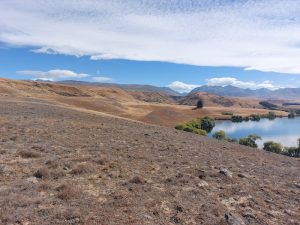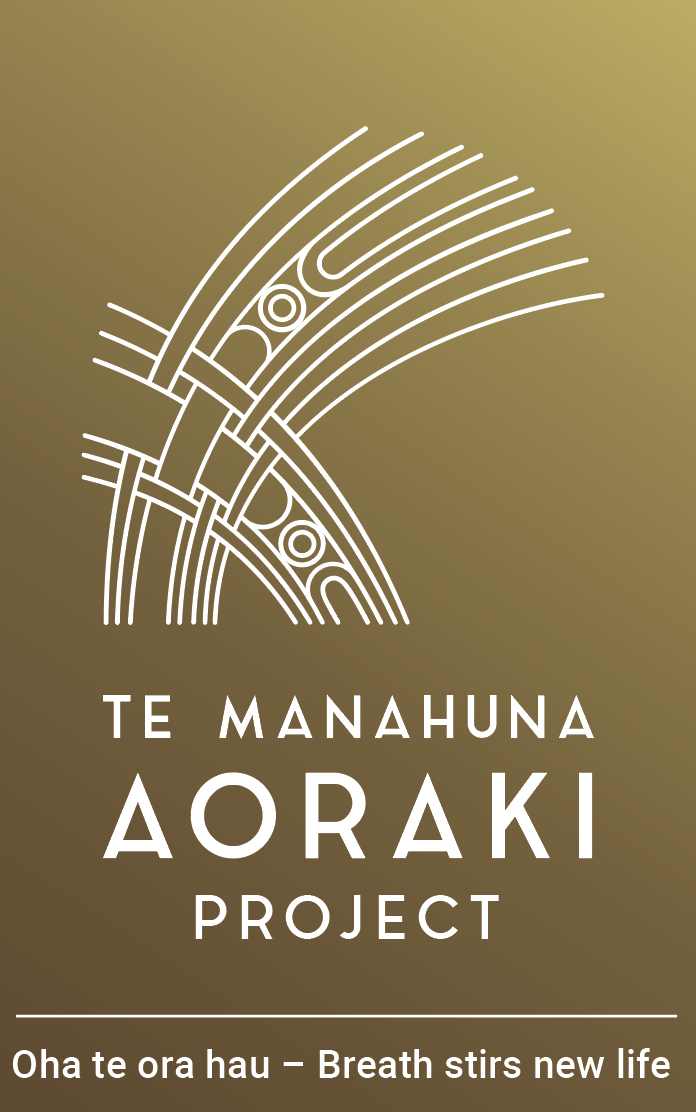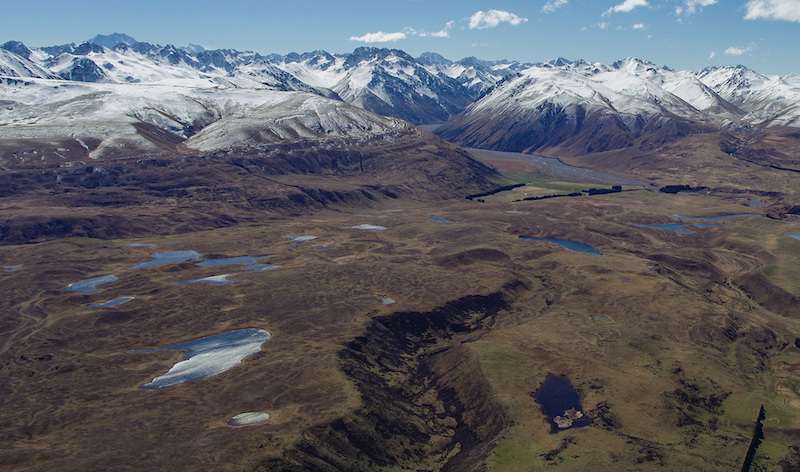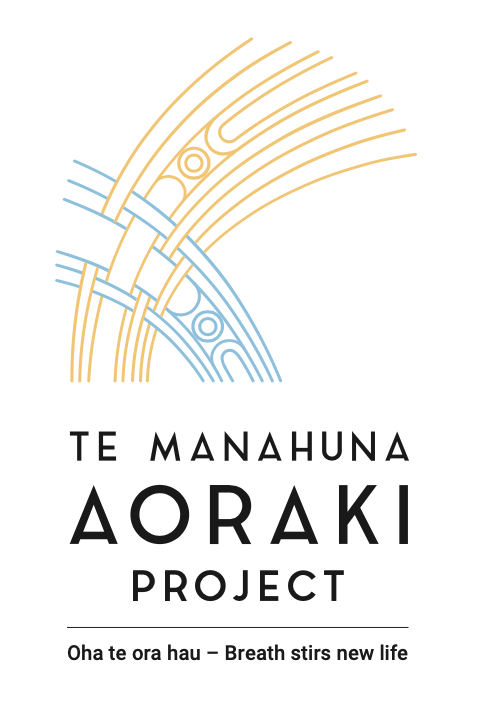The project is working with Glenmore Station to eliminate five introduced pests (possums, rats, rabbits, hares, and hedgehogs) across 1,500 hectares of farmland, with an aim to scale this approach across larger areas over time.
Glenmore Station has kakī/black stilt nesting habitat and the Glenmore Tarns are renowned the world over for having some of the finest examples of moraine kettle holes. The kettle holes were formed by retreating glaciers and are important habitat for ephemeral wetland turfs with many rare and threatened plant species which can be devastated by rabbit browsing.
Will and Emily Murray are the fourth generation to farm Glenmore Station and are very supportive of the trial. “It’s pretty cool to be a caretaker of somewhere so unique. We benefit from the pest elimination and hopefully what they learn at Glenmore can be taken to a wider area so the whole project is going to gain. There’s a bit of a disruption but we’re more than happy to work around it,” says Will.
Te Manahuna Aoraki Project is developing and implementing the pest elimination programmes under the leadership of Zero Invasive Predators (ZIP). ZIP is currently on track to eliminate possums, stoats and rats from 100,000 hectares on the West Coast by 2025 (the Predator Free South Westland project).
Te Manahuna Aoraki Project ranger Julia Gibson says the project is taking a multi-species approach and using the successful methods we have learnt from ZIP’s work in South Westland, and from rabbit elimination trials at Patersons Terrace.
 Possums, rats, and hedgehogs prey upon native birds like black-fronted terns and kakī (black stilt), along with lizards and invertebrates. Rabbits and hares thrive in dryland environments and impact the sensitive habitat of this area. They are also a food source for introduced predators, keeping predator numbers high.
Possums, rats, and hedgehogs prey upon native birds like black-fronted terns and kakī (black stilt), along with lizards and invertebrates. Rabbits and hares thrive in dryland environments and impact the sensitive habitat of this area. They are also a food source for introduced predators, keeping predator numbers high.
The plan is to use aerial and ground based methods to target all individual pests within the site. An aerial 1080 operation was undertaken in March, following two applications of non-toxic bait.
A network of over 180 trail cameras has been placed on the site, so by mid-April we should get a really good idea of how effective the aerial operation has been. What we detect on the cameras will help us plan the best follow up methods. These methods may include traps, night shooting, poison, and small-scale localized ‘spot treatments’ using aerial 1080.
“Once we’ve removed the pests, rabbit-proof fencing should keep rabbits and hedgehogs out. We do expect some reinvasion from rats, possums and hares. When we detect them through our camera network, we will quickly respond to prevent them re-establishing within the site,” says Julia Gibson.
This trial is supported by our partners Toitū te Whenua – Land Information New Zealand and Predator Free 2050 Limited. It provides us with an opportunity to test site specific techniques as we transition towards pest elimination across the entire 310,000 hectare project area, and across similar East Coast dryland ecosystems.


